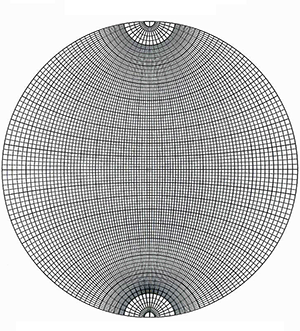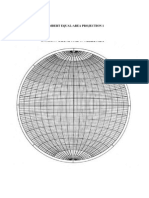A stereonet is a graphical representation of the orientation of planes and lines in three-dimensional space. It is commonly used in the field of geology and geophysics to analyze and interpret geological structures, such as faults, folds, and fractures. In this post, we will explore the concept of stereonets and how they are used.
Stereonet Printable
The first image shows a stereonet that is printable. This means that it can be downloaded and printed for use in geological analysis. Stereonets are typically printed on transparent paper, which allows for easy overlaying and comparison of different geological data.
Introduction to Stereonets 1
The second image provides an introduction to stereonets. It illustrates the concept of projecting three-dimensional structures onto a two-dimensional plane. By representing the orientation of geological features on a stereonet, geologists can analyze and interpret the data to understand the geological history of an area.
Wulff Net/Stereonet

The third image shows a Wulff Net, which is a type of stereonet commonly used in structural geology. It is a projection of a sphere onto a plane and is used to analyze the orientation of crystallographic planes in minerals. By plotting the orientations of crystallographic planes on a stereonet, geologists can determine the crystal symmetry and fabric of a rock.
Learning Geology: Stereographic projection

The fourth image illustrates the concept of stereographic projection. It shows how three-dimensional data can be projected onto a two-dimensional plane using certain mathematical transformations. Stereographic projection is widely used in stereonets to represent the orientation of geological structures in a simplified and easily interpretable manner.
How to represent their orientation in space, using a 2D sheet of paper

The fifth image demonstrates how to represent the orientation of geological features in three-dimensional space using a two-dimensional stereonet. By plotting the strike and dip measurements of geological planes on a stereonet, geologists can analyze the distribution and relationships between different geological structures.
Stereonet Help
The final image provides a guide on how to use a stereonet. It explains the different components of a stereonet, such as the Cartesian coordinate system and the tab interface. This image serves as a helpful resource for geologists who are new to using stereonets.
In conclusion, stereonets are powerful tools used by geologists to analyze and interpret the orientation of geological structures. By plotting and analyzing data on a stereonet, geologists can gain valuable insights into the geological history and structural characteristics of an area. Whether printed on transparent paper or used in digital format, stereonets are essential for geological mapping, mineral exploration, and structural analysis. They provide a visual representation of complex geological data in a simplified format, enabling geologists to make informed interpretations and decisions.


